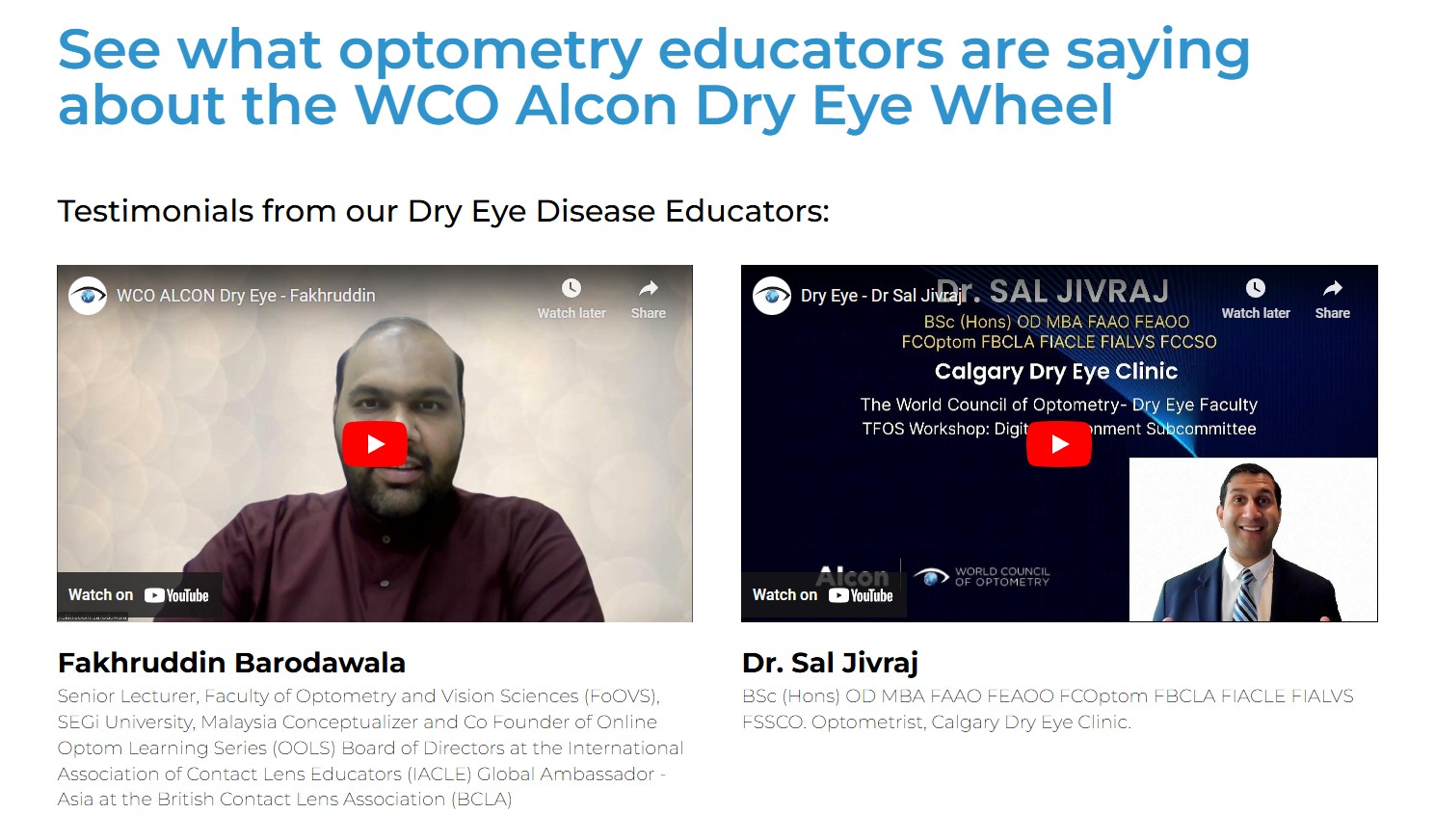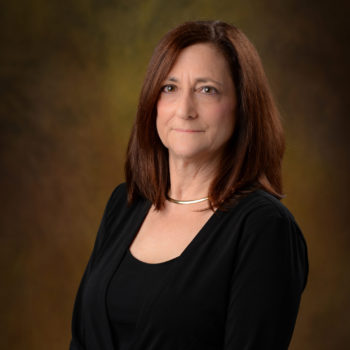The World Council of Optometry (WCO) and Alcon, have released new online resources to help eye care professionals (ECPs) use their Dry Eye Wheel, a practical tool that helps with the diagnosis and treatment of dry eye disease. The resources include explanatory videos by two leaders in the field and Spanish captioning for the website’s educational webinars.

Created by world-renowned educators Professors Jennifer Craig, Lyndon Jones, and James Wolffsohn, the interactive Wheel is designed for ECPs to easily reference the three pillars of mitigation, measurement, and management. It is accessible at no cost via the WCO website at https://dryeye.worldcouncilofoptometry.info/interactive-dry-eye-wheel.
The companion educational webinars include all three professors discussing the three pillars and the best way to integrate the wheel into ECPs’ daily practice. With 41% of people in Mexico and 13% of people who live in Brazil suffering from dry eye1, continued education and resources directed specifically toward Latin American countries are much needed. Spanish closed captioning of webinars builds on the Spanish-language Wheel introduced several weeks ago.

Dr. Sal Jivraj, OD, MBA, FAAO, an optometrist with the Calgary Dry Eye Clinic, and Fakhruddin Barodawala, MOptom, FASCO, FIACLE, FAAO, FBCLA, Senior Lecturer, Faculty of Optometry and Vision Sciences (FoOVS), SEGi University, have been using the tool regularly since its release. Both have created videos that are now available on the site regarding their experiences using the Wheel to educate students as well as fellow ECPs and patients.

“The addition of these tools to accompany the Dry Eye Wheel on the WCO website are a continuation of WCO and Alcon’s commitment to educating optometrists around the world about this issue, and how we can make a difference in the lives of millions,” said Dr. Sandra S. Block, OD, MEd. MPH, FAAO, FCOVD, president of the World Council of Optometry.
Dry eye disease can be a chronic, painful condition. About 1.4 billion people are affected by dry eye symptoms worldwide2, with reports of increased occurrence aligning with notable factors such as increasing use of technology, environmental triggers, and an aging population3. WCO and Alcon initially partnered to develop the dry eye disease education initiative to raise optometrists’ understanding of dry eye and deliver resources on practical management.
New educational resources. and use of the Dry Eye Wheel, are continuously being integrated to the website. To use the wheel and discover other dry eye disease resources, visit: https://dryeye.worldcouncilofoptometry.info/interactive-dry-eye-wheel.

###
[1] Chen H, McCann P, Lien T et al. Prevalence of dry eye and Meibomian gland dysfunction in Central and South America: a systematic review and meta-analysis. BMC Ophthalmol. 2024; 24: 50
[2] MarketScope (2020) 2020 Dry Eye Products Market Report. A Global Analysis for 2019 to 2025. October 2020.
[3] Stapleton F, Alves M, Bunya VY, Jalbert I, Lekhanont K et al. (2017) TFOS DEWS II Epidemiology Report. Ocul Surf 15 (3): 334-365.


